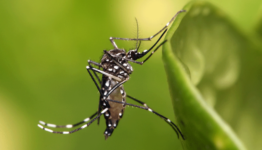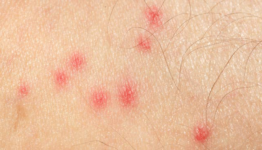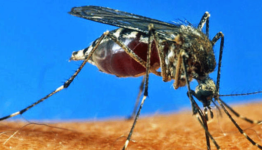Malaria
Malaria is as old as humanity. Researchers are of the opinion that the disease first started in Africa. This was evidenced by some ancient Chinese writing which documented early cases of malaria. In fact, these scripts recorded that malaria was transmitted by the female mosquitoes. Malaria got its name from the Latin word “Mal-aria” which translates to “bad air”. Before scientific evidences emerged, people believed that malaria was caused by bad air coming from rivers and swamps. It wasn’t until the 20th century did researchers discover the malaria was transmitted by certain species of mosquitoes, particularly the Anopheles mosquito. Mosquitoes that transmit malaria are present in every corner in the world, but more prevalent in sub-tropical and tropical areas. While this regions still battle with malaria epidemic till today, the disease has been combated in temperate regions across the world through the use of advanced mosquito control methods like organophosphate, DDT and organochlorine, which are all types of insecticide. Malaria has been kept at its barest minimum in the Western world because most people there are able to afford window screens and air conditioners, which both serve as mosquito repellent. However, pocket of malaria cases are still being reported in some part of Europe especially in the North.
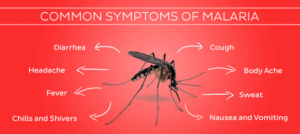 Roughly half a billion people are affected with malaria annually, globally. The World Health Organization has revealed that a 6 children are lost to malaria every 4 minutes. The United States before the 1940s suffered severely at the hands of mosquito. Things changed for the good when the government set up mosquito control program. Some 20 years later, malaria remerged in the United States again during the 60s. The resurgence of mosquito was caused by the US army coming back from Vietnam. The government quickly swung into action and in few months, the outbreak was contained. However, there is still every possibility of a new outbreak in the United States considering that countless number of illegal immigrants keep finding their way into the United States every year.
Roughly half a billion people are affected with malaria annually, globally. The World Health Organization has revealed that a 6 children are lost to malaria every 4 minutes. The United States before the 1940s suffered severely at the hands of mosquito. Things changed for the good when the government set up mosquito control program. Some 20 years later, malaria remerged in the United States again during the 60s. The resurgence of mosquito was caused by the US army coming back from Vietnam. The government quickly swung into action and in few months, the outbreak was contained. However, there is still every possibility of a new outbreak in the United States considering that countless number of illegal immigrants keep finding their way into the United States every year.
Freeborni and Quadrimaculatus, two species of mosquitoes belonging to the Anopheles genera are the major vectors of malaria. Different malaria medications have been formulate over the past five decades to combat malaria. Sadly, the plasmodium parasite that is responsible for malaria keep adapting that some of these medications have simply become completely ineffective. The good news, however, is that scientist have discovered a new treatment formula which is believed to have the capacity to supercharge the fight against malaria.
Chikungunya
Mosquitoes are the primary vectors of this virus. In 2013 alone, about three hundred and fifty thousand cases of Chinkungunya cases were reported in the Western Hemisphere. On July 2014, two people were admitted into a hospital in Florida. After diagnosis, it was discovered that they had been infected with the dreaded Chikungunya virus. In the same year, tourist coming back from U.S Virgin Islands and Puerto Rico were diagnosed of the disease, and since then, tight border control measures have been put in place. “Chikingunya” got its name from the word “Kimankonde”, a Mozambique word which when translated to English would read “contorted” because the sufferer suffers severe pains in the joints. Chikungunya isn’t as fatal as malaria, but it takes weeks for the sufferer to be relieved of the excruciating pain. For now, only pain relievers can be taken as an antidote for Chikungunya.
The Yellow fever mosquito (Aedes aegypti) and the Asian tiger mosquito (Aedes albopictus) are the major vectors of Chikungunya virus, with the yellow fever mosquito being more prevalent in north and South America. The female yellow fever mosquito when she wants to lay her eggs would do so in containers like old tires and flowerpots holding standing water. Spraying insecticides aren’t effective in the control of mosquitoes. The best thing to do here is to eliminate their breeding grounds by clearing away every standing water within your yard.
Dog Heartworm (Dirofilaria immitis)
Who says mosquitoes affect humans alone. Our beloved canines are also their target. Every year, thousands of dogs, cats, raccoons and foxes die of roundworm related diseases. The roundworm responsible for this disease is transmitted via mosquito bites.
When a dog gets infected with the baby roundworm known as microfilaria via mosquito bites, the worm would then find its way into the blood stream of the dog. Mosquitoes pick up this worm when they suck the blood of infected dogs. Once the baby worm has found its way into the mosquito guts, it would then move up into the mosquito’s entire body where it will wait for two to three weeks before fully developing. By the end of the waiting period, the microfilaria would have developed into a fully realized larvae, after which it will move back mosquito’s mouthpart and wait to be injected into the blood stream of a canine. Whenever a mosquito bites on the skin of a victim, it will leave a wound which creates an avenue for roundworms to enter into the victim’s blood line. If a human is the victim, the worm will die instantly. But if it is a dog, it would bury itself deep into the canine’s skin where it will stay for three to four months. No cure has been found yet for heartworm disease, and so the disease can only be prevented but can’t be eliminated. Extreme caution should be observed when treating an infected dog. The best control technique for this disease is to make your home and surrounding mosquito-proof. Dog heartworm first originated from the eastern and southern parts U.S during the 60s. 50 years later, it has spread to virtually every state and county in the United States.
Arboviruses, viruses transmitted by arthropods affects humans and other mammals more than any other virus and parasite transmitted by other insect. Arboviral encephalitis, a form of virus mostly transmitted by arthropods affects only non-human mammals. Their lifecycle is pretty complex, making them difficult to detect. They get picked up by a human host when the unsuspecting victim comes close to an infected invertebrate. Ecological changes can also cause them to escape and infect a human victim. Good enough, these viruses when they infect a human or dog victim barely lasts for up to a week because the body system of humans and vertebrae do not support their lifecycle. Some of the commonest types of these viruses that are prevalent in the U.S include: St. Louis encephalitis (SLE), West Nile virus (WN), La Crosse encephalitis (LAC) and Eastern Equine Encephalitis (EEE). The yellow fever mosquito happens to be the major vector of this viruses. Powassan, a form of virus predominant in the north of the United States also causes encephalitis, only that it is transmitted by ticks. Scientist have discovered a new form of Powassan virus. Encephalitis virus is present in every corner of the world, but mostly prevalent in Asia. In Japan alone, the virus infects fifty thousand persons every year.
Dengue
Mostly present in Africa, Asia and America, the Dengue fever is one of the diseases transmitted via the bites of arthropods. Though not fatal, the dengue fever comes with severe discomfiting symptoms. Sadly, the symptoms that accompany the disease has grown in severity, and more cases of fatality are being reported every year. The Aedes albopictus and Aedes aegypti are the major vectors of this disease. Their favorite breeding sites are containers holding standing water and close to human inhabitation. They are resistant to insecticides, and have over the years learnt to adapt so well that control techniques that worked some years ago have become completely ineffective. The number of dengue virus cases reported every year continues 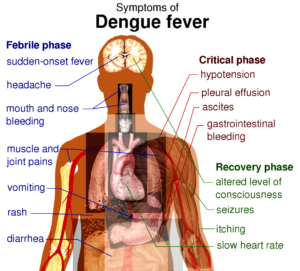 to grow every year. In 1999, over fifty five persons were treated of dengue fever in Texas. Eighty five more cases of the fever was reported in Hawaii while another 20 cases were reported in Florida. The fever has ravaged several South American countries, with Venezuela being the most hit. Dengue fever has also spread to Asia with countries like Indonesia reporting over fifty four thousand cases and six hundred deaths.
to grow every year. In 1999, over fifty five persons were treated of dengue fever in Texas. Eighty five more cases of the fever was reported in Hawaii while another 20 cases were reported in Florida. The fever has ravaged several South American countries, with Venezuela being the most hit. Dengue fever has also spread to Asia with countries like Indonesia reporting over fifty four thousand cases and six hundred deaths.
Puerto Rico was badly hit by dengue fever in 2010. Over 21,000 persons were hospitalized after contracting the fever. 75 years after the first case of local dengue transmission was reported in Key West, Florida, the disease resurfaced again in 2009. Residents of the town have been advised to be wary of the disease is scientific evidence has shown that the town is at the brink of a full blown outbreak. There seems to be no stopping to the spread of Dengue virus in Florida as 65 persons were diagnosed of the fever in 2010, indicating that the control measures put in place by Floridian government hasn’t been effective.
Yellow fever
Prevalent only in the Americas and Africa, Yellow fever has been around for over four hundred years now. The specie of mosquito that transmits this disease lives in the jungle as well as urban centers. So far, the transmission rate of the disease has dropped significantly, thanks to the yellow fever vaccination policy set up by different governments of the world. Sadly, the disease continues to claim the lives of thousands every year, with the World Health Organization revealing that about 30,000 lives are lost to the disease every year. Though initially absent in Asia, yellow fever has gradually found its way into the continent. In 2002, the disease claimed the life of an American who had spent a great deal of his time in the Amazon. The following year, 27 Sudanese lost their lives to the disease and 178 more were hospitalized. So far, yellow fever has claimed the lives of 99 persons in the United States.
Eastern Equine Encephalitis (EEE)
This disease mostly affects horses, and it is transmitted by mosquitoes. Of all arboviruses transmitted by mosquitoes, none is as deadly as EEE. The virus when it finds its way into the human system would severely damage the brain and surrounding nerves. The virus is prevalent in swamplands majorly in places like east-north America and also states along the gulf coast. South and Central America, including the Caribbean has also be ravaged by the virus. EEE is transmitted by different species of mosquitoes including the Culiseta melanura and the Culex. They both have preference for the blood of birds, mammals and humans. When an infected mosquito bites and transmits EEE to human or mammals, the virus can’t be transmitted anymore because the mammalian blood does not support the lifecycle of EEE. However, symptoms like headache, sore-throat, fever and flu. In severe cases, acute headache, coma and even death may follow. Only 50% of EEE sufferers get to survive, and even those who do end up suffering from severe brain damage. Till date, no treatment or cure has been found yet for EEE. Only a vaccine for horses has been formulated.
St. Louis Encephalitis (SLE)
This is a disease which mostly affects birds, and is transmitted from birds to man via mosquito bite. The virus is prevalent in the United States, with states like Florida and New Mexico being the most affected. Outbreaks of SLE were reported first reported in Florida sometime in 1959, the last case of it was in 1990. The virus mostly affects adults between the ages of twenty and fifty. Between 1964 and 1998, about 4478 persons were diagnosed of SLE, and virtually all victims experienced symptoms similar to EEE. Till date, no cure has been found yet for SLE. 9 years after the first case of SLE was reported in the United States, a case of the disease was reported in Mississippi. Prior before then, SLE had affected about three hundred persons in Mississippi sometime in 1975. The biggest case of mosquito-borne infection occurred in the United States in 2003, with Riverside, a county in California being the worst hit. Chickens and not humans were infected. The only time a human suffered SLE in California was in 1997. Someone lost his life to West Nile Virus in 2003 in Louisiana.
LaCrosse Encephalitis (LAC)
Unlike SLE and EEE that has a high spread rate, LAC cases aren’t so common. However, 90 persons across the United States are treated of LAC every year. LAC is more prevalent in Mississippi and some other states that lie along the Appalachian area. The United States had been free from LAC till 1963 when a woman was diagnosed of the disease in Wisconsin. Researchers believe that the specie of mosquito responsible for the transmission of this disease is the woodland mosquito, scientifically known as the Aedes triseriatus. Some people know it as the tree-hole mosquito. This mosquito is known to feed on the blood of mammals including humans. Children below the ages of 16 are most susceptible to LAC. The human blood does not permit for inter human transmission. No cure has been found yet for the disease.
Western Equine Encephalitis
WEE, a disease which mostly affects horses was first reported in California in 1930. Mexico, Canada and Mississippi and are major places where the disease is prevalent. The specie of mosquito responsible for the transmission of WEE is the Culex tarsalis. It mostly feeds on the blood of birds and select number of mammals. An infected mosquito when it bites a human host would transmit the disease. Since 1964, over a thousand persons have been infected with WEE. So far, cure for WEE has been found but it only works on horses and not humans. WEE some years back killed off thousands of chickens in Arizona.
West Nile Virus (WNV)
It is generally believed in the scientific community that WNV originated in Uganda, a country to the south of Africa. The disease then spread to the Middle East, central Asia and Europe. The West Nile virus belongs to the family of Flaviviridae, and over 70 types of these viruses have been identified so far. This virus shares so many botanical characteristics with the Murray Valley encephalitis virus, Japanese encephalitis virus, and St. Louis virus. WNV just like other viruses in the Flaviviridae family is transmitted by mosquitoes from birds to mammals, including humans. Some of the symptoms that might follow after a WNV infection include weakness of the body, headache, feverish feeling, rashes and pains. In some cases, the victim may suffer a flu which may last for dozens of days. 63 percent of the times, victims of WNV had reported experiencing the symptom for a period of 60 days. Certain types of West Nile encephalitis affect the brain and nervous system. The two major ones are the West Nile meningitis and West Nile encephalitis. They both affect the brain by causing severe inflammation.
The first cases of this virus was reported in New York sometime in 1999. The disease claimed 7 lives, leaving 62 more hospitalized. Also, about 10 horses were killed in the wake of the disease. About 10 persons lost the lives to the disease across 10 states in the United States in 2001. Also, several cases were reported in the Caribbean, Canada and Washington D.C. Furthermore, 733 horses in Florida were infected with the virus in 2001 – 33 percent of the affected horses dies almost immediately. After an intensive research by US scientist, it was discovered that about forty three types of mosquitoes are vectors of WNV. Of this number, mosquitoes belonging to the Culex Pipiens are the major vectors of the virus, and the virus infects both horses and humans. After clinical test, it was discovered that 300 birds of different species have been infected with WNV.
By 2002, WNV had spread further to more states across the United States and even Canada. The total number of affected states rose to 44. Arizona, Utah, Alaska, Hawaii, Oregon and Nevada are the only states free of WNV. In all, 232 lives have been lost to WNV, and 3800 more have been hospitalized across 40 states in the United States. Horses haven’t been spared either – 24,350 were infected in 2002. Strangely, this virus also affects alligators. So far, the only treatment available now is for horses.
In 2003, a case of WNV as reported in South Carolina precisely in July. The virus then spread further to South Dakota where a canine was diagnosed of the infection. In total, close to ten thousand cases were reported, with Colorado having 2947, and Nebraska 1942. About 7,000 of the documented 10,000 reports were cases of West Nile Fever, while the other 3000 were cases of neuroinvasive in its acute form. 94 persons after clinical test were diagnosed of WNV in Florida. WNV claimed the lives of over four thousand birds across thirty nine states across the United States. Also, four thousand five hundred horses across forty states were stricken with the virus, with Colorado recording the highest horse mortality. Birds, mostly chickens were also affected by the virus. A total of a thousand, one hundred and seventy three cases of seroconversions were documented across thirty four counties across the United States. The mosquito-vector of WNV has since then spread to over 33 states.
Canada hasn’t be spared by WNV. The virus is prevalent in about ten provinces in the country. It has since claimed the lives of 10 persons, and a thousand two hundred and twenty more have been hospitalized. Furthermore, four hundred and forty five horses have been diagnosed of the virus across six regions in Canada, including Alberta Province. Researchers have found about five hundred and five mosquito pools across Manitoba and five more provinces. The virus has killed thousands of Canadian birds.
In 2003, five hundred and ninety Mexicans across twenty five regions in Mexico were infected with WNV. Furthermore, two thousand four hundred and five Mexican horses across twenty nine states have been infected with the virus. As much as a hundred and seventeen birds were confirmed to be infected with WNV.
No case of WNV human infection was reported in New Mexico and Arizona until 2004, precisely in May when 7 persons lost their lives to the virus. The earliest case of WNV was documented in 2004, precisely in June, leading to the death of fourteen persons. This virus has since then spread to Texas, Alabama, Virginia and Arizona, with horses being the most affected. Mosquito control experts documented 58 pools that had been infested with the mosquitoes responsible for the transmission of WNV. They are Illinois, Pennsylvania, California, Louisiana, Arizona and Indiana.
Over thirty six thousand, four hundred and thirty seven persons and animals have been diagnosed of WNV in 2014. Fifteen thousand, seven hundred and seventy four of these cases were of encephalitis/meningitis. Of this number, 1538 were death cases. Researchers are having a difficult time accurately calculating the infection rate of WNV because it shares similar symptoms with other arbovviruses.
The first case of WNV was reported in Canada in 2004. It was actually a bird that tested positive. At the same time, somewhere in Puerto Rico, two birds tested positive to WNV infection. The British government has launched an aggressive program to track the spread rate of WNV in humans in the country. The program has been in operation for the past three years now, and it only runs during summer when WNV because active globally. So far, no case of WNV has been reported in the United Kingdom. However, authorities have developed a contingency plan in the event the virus breaks out.
Zika Virus
This virus originated from the Africa before then spreading to the western hemisphere as well as the Pacific. Zika virus is a form of Flavivirus, and shares similar characteristics with Yellow Fever, St. Louis, Equine encephalitis and West Nile. This virus is believed to have originated from Uganda, and the first victims of the virus were macaque monkeys. The virus then spread to South Africa in 2014, eventually finding its way into North and South America.
About 426 cases of Zika virus were reported in 2016, largely due to foreigners coming into the United States. Good enough, no cases of local transmission has been documented yet in the United States. However, roughly 600 cases of Zika virus transmission were reported in US Virgin Islands and Puerto Rico.
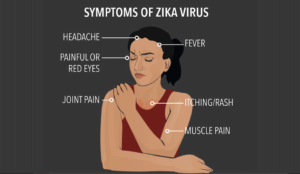 Zika virus can be transmitted via sexual contact, though this rarely happens. The Aedes albopictus and Aedes aegypti specie of mosquitoes are responsible for the transmission of this virus. Some of the symptoms that accompany Zika virus infection include rash, pain in the joints, fever and conjunctivitis, and this symptoms can last for months. The problem with Zika virus is that the symptoms largely go unnoticed. Zika virus when it infects children leads to inflammation of the brain, eventually leading to death. Also, it has been determined that Zika virus is responsible for Guillain-Barre, a nervous disorder.
Zika virus can be transmitted via sexual contact, though this rarely happens. The Aedes albopictus and Aedes aegypti specie of mosquitoes are responsible for the transmission of this virus. Some of the symptoms that accompany Zika virus infection include rash, pain in the joints, fever and conjunctivitis, and this symptoms can last for months. The problem with Zika virus is that the symptoms largely go unnoticed. Zika virus when it infects children leads to inflammation of the brain, eventually leading to death. Also, it has been determined that Zika virus is responsible for Guillain-Barre, a nervous disorder.
The specie of mosquito responsible for the transmission of Zika Virus prefer to lay their eggs in treeholes and containers holding standing water. This mosquitoes prefer to feed at night, and will remain in a places that are right for breeding. They operate so stealthily that they would feed on a host without being spotted.
Control measures like the use of ULV spray won’t keep this mosquitoes away. The best way to keep them off is by eliminating their habitats and clearing your surrounding of their eggs. Any water that has stayed untouched for more than a week should be immediately eliminated. Control measures like using repellents recommended by EPA, and putting on protective clothing should work.
Also, fitting your home with air conditioners, door and window screens works quite well too, especially if you live close to their habitats. Use of mosquito treated nets is also recommended.



